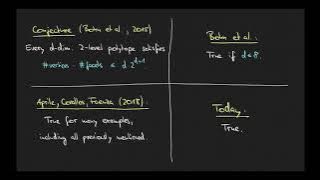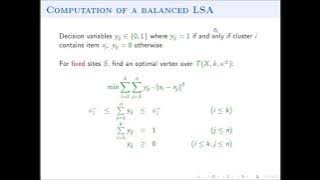Chiral polytope
In mathematics, there are two competing definitions for a chiral polytope. One is that it is a polytope that is chiral (or "enantiomorphic"), meaning that it does not have mirror symmetry. By this definition, a polytope that lacks any symmetry at all would be an example of a chiral polytope. The other, competing definition of a chiral polytope is that it is a polytope that is as symmetric as possible without being mirror-symmetric, formalized in terms of the action of the symmetry group of the polytope on its flags. By this definition, even highly-symmetric and enantiomorphic polytopes such as the snub cube are not chiral. Much of the study of symmetric but chiral polytopes has been carried out in the framework of abstract polytopes, because of the paucity of geometric examples. (Wikipedia).



















